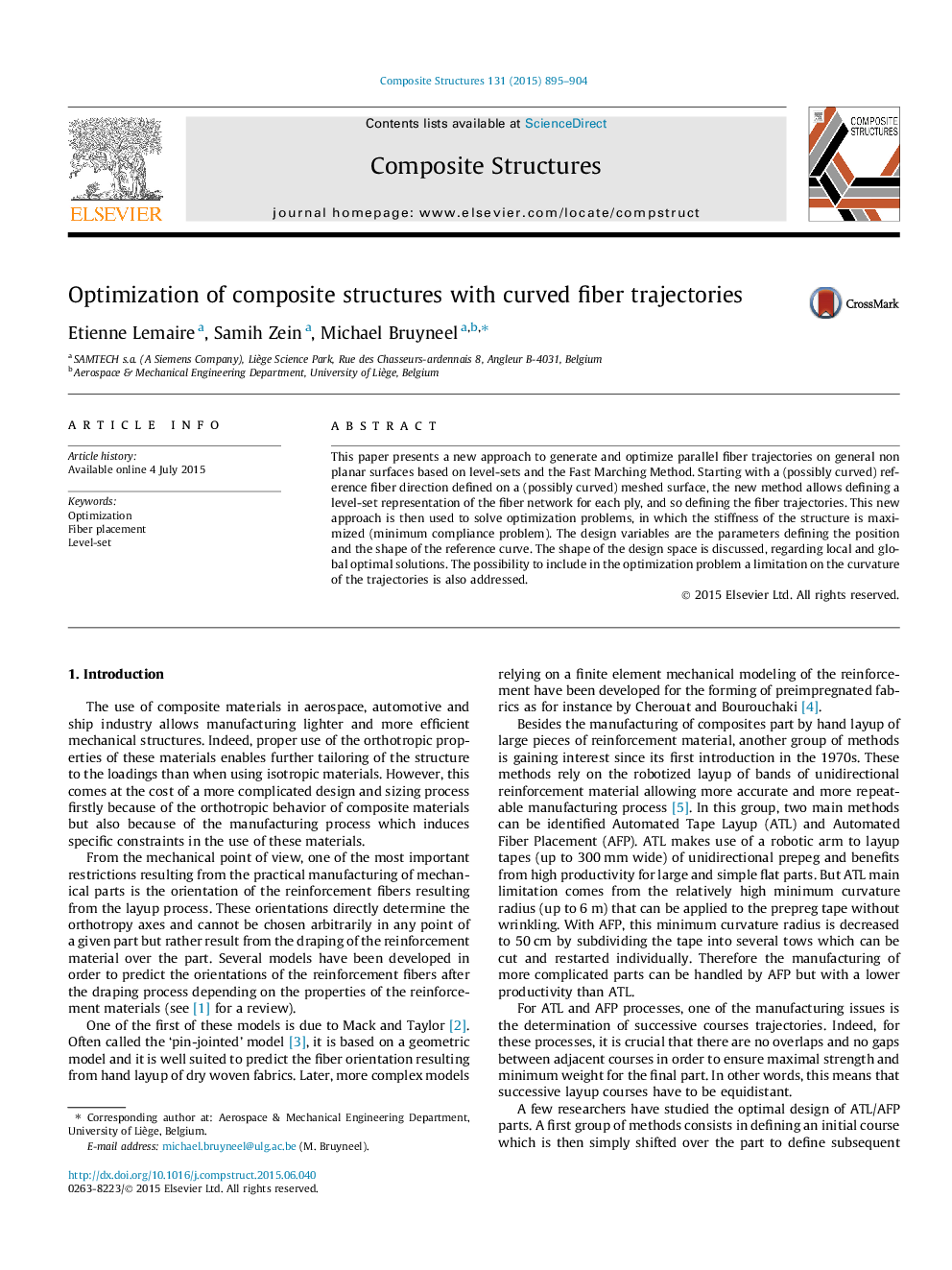| Article ID | Journal | Published Year | Pages | File Type |
|---|---|---|---|---|
| 6706793 | Composite Structures | 2015 | 10 Pages |
Abstract
This paper presents a new approach to generate and optimize parallel fiber trajectories on general non planar surfaces based on level-sets and the Fast Marching Method. Starting with a (possibly curved) reference fiber direction defined on a (possibly curved) meshed surface, the new method allows defining a level-set representation of the fiber network for each ply, and so defining the fiber trajectories. This new approach is then used to solve optimization problems, in which the stiffness of the structure is maximized (minimum compliance problem). The design variables are the parameters defining the position and the shape of the reference curve. The shape of the design space is discussed, regarding local and global optimal solutions. The possibility to include in the optimization problem a limitation on the curvature of the trajectories is also addressed.
Keywords
Related Topics
Physical Sciences and Engineering
Engineering
Civil and Structural Engineering
Authors
Etienne Lemaire, Samih Zein, Michael Bruyneel,
